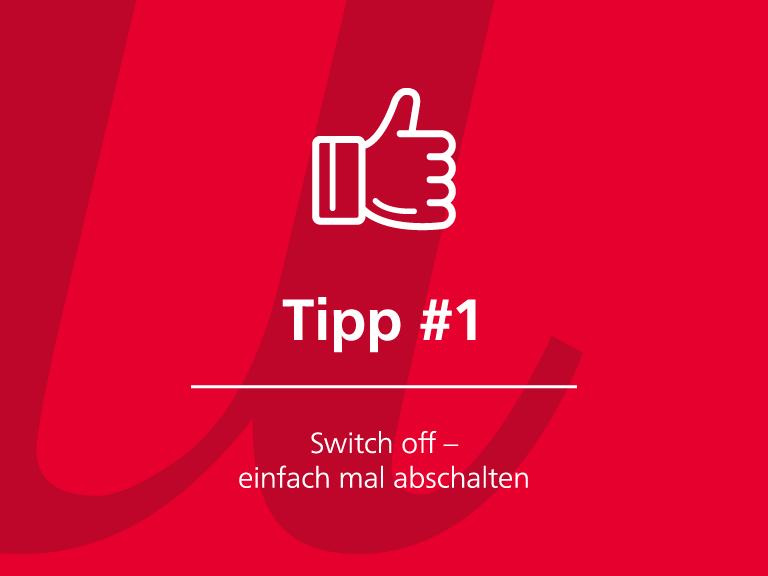Environmental tip 1: Saving energy

Simply switch off
We can all contribute to reducing energy consumption by simply switching off a device. The University of Bern has considerable savings potential due to the number of students and employees. By making small adjustments to our daily routine, we can achieve great things together.
1. Switch off devices – only off means no consumption
- Switch off all devices during long breaks and meetings, as well as at the end of the day.
- Only switch on devices such as printers and copiers when they are actually going to be used.
- In the case of chargers, unplug the plug after each charging, otherwise power will continue to be consumed.
- Use standby instead of a screensaver when not in use. The settings on the computer can be defined accordingly so that this happens automatically after a set period of time.
- Use a power strip with a toggle switch to disconnect all devices from the mains supply at the end of the working day.
- Pay attention to the size and number of screens (as large as necessary, as small as possible; if only one is needed, the other can remain switched off).
- Lower the brightness of laptop and smartphone screens (as bright as necessary, as dark as possible).
2. Light off – switch off the light when leaving the room
If possible, use daylight. Good room lighting promotes well-being in the workplace. If lamps cannot be dispensed with, make sure you switch them off again when it is bright enough or when you leave the room. Lights should also be switched off in unused meeting rooms and corridors if this can be controlled manually.
3. Stairs instead of elevators – saves energy and keeps you fit
Using the stairs instead of the lift saves energy and is better for your health – if you are not transporting heavy or bulky things.
4. Spring cleaning for electrical appliances & Co. – descaling and dusting for greater efficiency
- Calcified appliances require more energy to heat water. Regular descaling ensures that kettles, coffee machines and other appliances work more efficiently.
- A thick layer of ice in the freezer compartment increases power consumption unnecessarily – regular defrosting of fridges and freezers improves efficiency and saves energy. Spring is the perfect time. The temperatures outside are often still cool enough to temporarily store food outdoors.
- Dust often accumulates on ventilation grilles and on the back of electrical appliances, such as refrigerators. This makes heat dissipation more difficult and increases power consumption. The back of electrical appliances and ventilation grilles can be cleaned with a vacuum cleaner or a dry cloth.
5. Laboratories – important output, let’s take the input into account
- In addition to heating, ventilation and air conditioning technology, laboratories require energy-intensive equipment such as freezers, incubators, pumps and fume cupboards, as well as various materials. Laboratories often have huge savings potential. Checklists and leading questions can help to identify feasible potential with little effort. Devices that should be switched off after use can also be marked with stickers, for example. Further information on the stickers can be found further down this page.
- You can check how cool certain samples actually need to be stored. If the temperature of individual refrigerators and freezers can be increased, this will help to reduce the environmental impact, as electricity consumption increases exponentially as the temperature decreases.
- The refrigeration units put into service should, if possible, have a reasonable capacity utilization. By combining, the number of devices put into operation can be reduced.
- Information on the University of Bern’s GreenLabs network and contact details for further resources can be found here.
Get involved and motivate others. Order the new stickers!
Basically, everything that consumes energy should be switched off or turned down as soon as it is not needed. As a reminder, stickers can now be ordered from the Office for Sustainable Development to label devices that should be switched off after use.
Interested? If so, please send your contact details to: nachhaltigkeit.qualitaet@unibe.ch
We look forward to receiving your sticker order!

